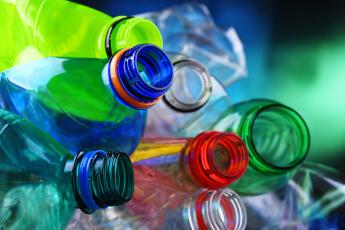The petrochemical industry is serving a critical role in the fight against COVID-19. AFPM Senior Petrochemical Advisor Jim Cooper talks about the central role of petrochemicals in health care, and why the petrochemical industry is considered critical infrastructure.
Let’s start with the big ones: N95 masks and personal protective equipment (PPE). What’s the petrochemical industry’s role in producing these lifesaving products?
Jim Cooper: The petrochemical industry is central to PPE. You won’t be able to name too many products when it comes to protecting human health that we’re not directly connected with. Our members make the six base materials that help make everything from ventilators to hand sanitizers.
For N95 masks, they use something called spun-bonded polypropylene. That’s a fancy way of saying it’s not woven; they make the fibers and bond them together to create fabric that offers protection from pathogens and droplets. Polypropylene is unique because you can blow into these fibers that are very small, but they still maintain structural integrity. When bonded together, that matrix allows for breathability. They call it porosity—the size of little gaps between fibers—that allow you to breathe and especially exhale comfortably. The material is very malleable, so it fits around the face comfortably, more comfortably than other products.
People in the essential medical services need N95 masks because they allow for a better fit. And producers work extremely hard to create a comfortable mask using a number of different petrochemicals: they’ll use polyurethane around the nose to get a proper fit, use polypropylene as the filter, then a mask shell made of polyester.
What about other PPE?
JC: Similarly, petrochemicals are critical for surgical and patient gowns. Disposable surgical gowns are primarily made of non-woven polypropylene. For patient gowns, you want some properties that allow them to withstand moisture and allow comfort, that’s why most are made of polyester blends.
The crux of polyester is a substance called paraxylene, something AFPM members make along with polypropylene. One of the important benefits of these materials is that they’re chemically inert and can stand up to a lot of conditions, including sterilization, which a lot of materials can’t.
Disinfectants are also top of mind right now. How are AFPM members involved in their creation?
JC: People may not realize that there are different grades of materials that are used in different types of products. The type of product used to clean a countertop is different from a hand sanitizer or something intended to be left on the skin. Hand sanitizers are made of very specific ingredients—which are regulated by the Food and Drug Administration—that include an active pharmaceutical ingredient that performs the sanitizing function. That’s either ethanol or isopropanol—also known as isopropyl alcohol.
With ethanol, which some refiners manufacture and use as an octane-booster for gasoline, the main ingredient sources are agriculture-based, primarily corn in this country. There is a grade called USP grade and that comes with a lot of stipulations, including how records are kept and things of that nature, and it’s a fairly high purity.
AFPM members are working with the federal government to maximize the supply of ethanol available to make much needed hand sanitizers. This includes collaborating with the government and evaluating the chemistry to ensure ethanol used in hand sanitizers is comprised of pure feedstocks that do not contain any harmful byproducts.
You can also make ethanol from ethylene, which our members produce. And our members make isopropanol as well.
A lot of members involved in producing these materials have already been contacted by federal, state and local officials. They’re already in the thick of things and are working to ensure we have an adequate supply. Our members are doing this out of a sense of social responsibility, not out of seeing a business opportunity. What they’re trying to do is really just help. Whether it’s ethanol, isopropanol, or some of the other ingredients—denaturing ingredients for instance—members are stepping up to help.
What would you tell people who are hoarding hand sanitizers?
JC: These ingredients and products are going to become increasingly important. And I hope people who are hoarding will realize that there are real shortages. Some hospitals are making their own hand sanitizer because they can’t get their hands on any. Because we want consistency of products and quality control, we don’t want people to make their own. We hope that people who are hoarding or diverting these products will free up the supply so that it can go to these essential medical efforts.
While people are understandably focused on the availability of supplies, the issue of medical sterilization is getting less attention. What can you tell us about the industries’ role in that arena?
JC: Now more than ever there is a need for products that can sterilize environments and eliminate pathogens. There is a particular chemical compound, ethylene oxide that has the ability to sterilize pathogens, and because it’s a gas it can get in the nooks and crannies it can clean very effectively. It’s made from ethylene, one of the fundamental six base materials that our members produce and in the face of the COVID-19 pandemic we’re seeing sterilization plants gearing up to help meet the demand for pathogen fighting products.
For instance, ethylene oxide is used to sterilize hospital gowns, single-use gowns, and surgical masks. So again, that’s one of the reasons why polypropylene is highly prized for medical gowns and masks—it will stand up to sterilization by ethylene oxide and still maintain its properties.
Visit the COVID-19 Preparedness, Response and Resources page for more on how the fuel and petrochemical industries are responding to COVID-19.


